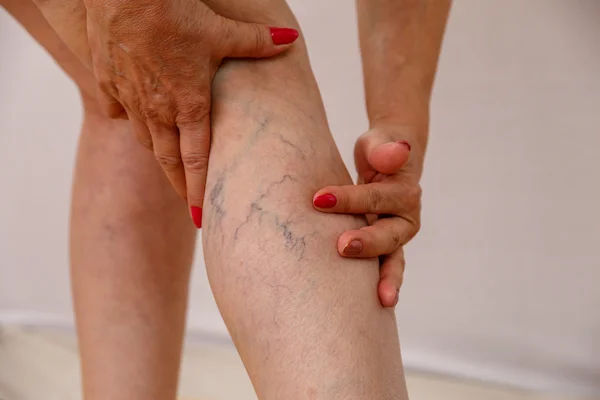Your Complete Guide to Varicose Veins: Causes, Treatments & Prevention
Discover everything about varicose veins in this complete guide—causes, symptoms, treatments, and prevention tips. Learn when to seek medical help and explore effective options for healthier legs.
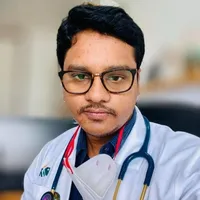
Written by Dr. Mohammed Kamran
Reviewed by Dr. D Bhanu Prakash MBBS, AFIH, Advanced certificate in critical care medicine, Fellowship in critical care medicine
Last updated on 16th Oct, 2025
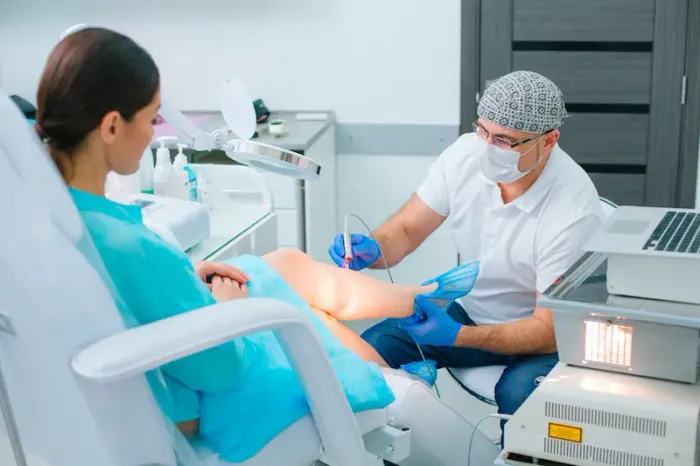
Introduction
Those twisted, bulging, blueish-purple veins on your legs are a common sight for millions. But varicose veins are more than just a cosmetic issue; they can be a sign of an underlying circulatory condition causing discomfort and pain. If you've been ignoring them or feeling self-conscious, this guide is for you. We'll demystify what they are, why they happen, and the wide range of modern treatments available. From simple lifestyle tweaks to medical procedures, understanding your options is the first step toward finding relief and healthier legs.
This comprehensive guide will walk you through everything from the basic science of faulty vein valves to recognising symptoms, exploring treatment avenues, and implementing effective prevention strategies.
What Are Varicose Veins? Beyond the Surface
Varicose veins are enlarged, swollen, and twisting veins, often appearing blue or dark purple. They occur when faulty valves within the veins allow blood to flow backwards and pool, leading to increased pressure and the characteristic bulging appearance. While they can develop anywhere, they most commonly affect the legs and feet due to the pressure of standing and walking upright.
Consult a Varicose Surgeon for Personalised Advice
Varicose Veins vs. Spider Veins: Knowing the Difference
It's easy to confuse the two, but they are distinct. Spider veins are smaller, finer, red or blue vessels that look like a spiderweb or tree branches close to the skin's surface. They can be a cosmetic concern but rarely cause physical discomfort. Varicose veins, on the other hand, are larger, deeper, and can cause significant symptoms like aching, heaviness, and swelling. Think of spider veins as a warning sign and varicose veins as the more advanced condition.
What Causes Varicose Veins? The Science of Faulty Valves
At the heart of the issue is a condition called venous insufficiency. Your arteries carry blood from your heart to the rest of your body, and your veins return it. Leg veins must work against gravity to do this. One-way valves inside the veins open to let blood through and then close to prevent it from flowing backwards. When these valves weaken or are damaged, blood can leak backwards, pool in the vein, and cause it to stretch and twist, forming a varicose vein.
Key Risk Factors That Increase Your Likelihood
While the exact cause of valve weakness isn't always clear, several risk factors for venous disease play a significant role:
1. Age: Wear and tear on the vein valves over time is a primary factor.
2. Sex: Women are more likely to develop them, partly due to hormonal changes during pregnancy, menstruation, and menopause.
3. Pregnancy: Increased blood volume and pressure from the growing uterus on veins in the pelvis contribute to varicose veins during pregnancy.
4. Family History: If others in your family have them, your risk is higher.
5. Obesity: Excess weight puts additional pressure on your veins.
6. Prolonged Standing or Sitting: Jobs that require long periods in one position hinder blood flow.
Recognising the Symptoms: More Than Just a Cosmetic Concern
The signs of varicose veins extend far beyond their appearance. Common symptoms of varicose veins include:
1. Aching, heavy, or painful feelings in the legs
2. Burning, throbbing, or muscle cramping
3. Increased pain after sitting or standing for long periods
4. Itching around one or more of your veins
5. Skin discolouration or inflammation around a vein
6. In severe cases, bleeding from the veins and painful ulcers.
When to See a Doctor: Warning Signs Not to Ignore
Home management is possible for mild cases, but certain signs warrant professional medical advice. If you experience a sudden, painful swelling in your leg, a sore or rash near the vein that doesn't heal, or if the vein becomes red, tender, and warm to the touch, it could indicate a more serious issue like a blood clot or infection. If your condition does not improve after trying lifestyle methods, book a physical visit to a doctor with Apollo24|7 for a proper evaluation and diagnosis.
How Are Varicose Veins Diagnosed?
Diagnosis is typically straightforward. A doctor will conduct a physical exam, looking at your veins while you're standing or sitting with your legs dangling. To confirm venous insufficiency and rule out other problems, they may recommend a Duplex Ultrasound. This non-invasive test visualises blood flow and the structure of your veins, mapping out the exact locations of faulty valves.
Effective Treatment Options for Varicose Veins
The goal of treatment is to alleviate symptoms, prevent complications, and improve appearance. The best treatment for varicose veins depends on the severity.
Lifestyle and Home Remedies
For mild varicose veins pain relief, these steps can be highly effective:
1. Exercise: Walk regularly to improve calf muscle pump and circulation.
2. Weight Management: Shedding excess pounds reduces pressure on veins.
3. Elevation: Raise your legs above your heart level for 15 minutes several times a day.
4. Avoid Long Periods of Sitting/Standing: Take breaks to move and stretch.
Compression Stockings: The First Line of Defense
These specially designed stockings apply steady pressure to your legs, helping veins and leg muscles move blood more efficiently. They are often the first conservative approach before moving to other treatments.
Minimally Invasive Procedures
When conservative measures aren't enough, several outpatient procedures can seal off the problem vein.
1. Sclerotherapy: A solution is injected into the vein, causing it to scar and close, fading over a few weeks.
2. Laser Ablation (Endovenous): A laser fibre is inserted into the vein, delivering heat that causes the vein to collapse and seal shut.
Surgical Options
For very large, severe veins, surgery might be recommended.
1. Ligation and Stripping: The vein is tied off (ligation) and removed (stripping) through small incisions.
2. Ambulatory Phlebectomy: Smaller varicose veins are removed through a series of tiny skin punctures.
Can You Prevent Varicose Veins? Proactive Steps to Take
You can't always prevent them, especially if genetics are a factor, but you can improve circulation and muscle tone to reduce your risk.
1. Exercise regularly.
2. Maintain a healthy weight and a high-fibre diet.
3. Change your sitting or standing position frequently.
4. Avoid high heels and tight hosiery; opt for low-heeled shoes to work your calf muscles.
5. Elevate your legs when resting.
6. Wear compression socks if you have a high-risk job or lifestyle.
Potential Complications of Untreated Varicose Veins
Leaving severe varicose veins untreated can sometimes lead to:
1. Ulcers: Painful open sores can form near the ankle.
2. Blood Clots: Occasionally, deep veins within the legs can become enlarged and cause leg swelling and pain (deep vein thrombosis or DVT).
3. Bleeding: The veins close to the skin can burst, causing minor bleeding that requires medical attention.
Conclusion
Living with varicose veins doesn't have to mean living with constant discomfort or self-consciousness. As we've explored, this common condition is well-understood, and a spectrum of solutions exists—from simple daily habits to advanced clinical procedures. The key is to listen to your body. Don't dismiss persistent symptoms as merely cosmetic. Taking proactive steps to improve your circulation and seeking professional advice when needed can dramatically improve your leg health and overall quality of life. Remember, effective management is within reach, and you can take control of your vascular health starting today.
Consult a Varicose Surgeon for Personalised Advice
Consult a Varicose Surgeon for Personalised Advice

Dr. Prakash Goura
Vascular and Endovascular Surgeon
8 Years • MBBS , DNB ( GENERAL SURGERY) , MRCS, MCh ( VASCULAR & ENDOVASCULAR SURGERY)
Hyderabad
Apollo Hospitals Jubilee Hills, Hyderabad
(50+ Patients)

Dr Yashpal Singh
Vascular and Endovascular Surgeon
18 Years • MBBS, MS (Gen. Surgery), DNB ( Peripheral Vascular Surgery)
Lucknow
Apollomedics Super Speciality Hospital, Lucknow

Dr. Abhijit Das
Surgical Oncologist
10 Years • MBBS MS, MCh (Surgical Oncology), Fellowship in Thoracic Oncology (SNUK, Korea), Fellowship in Advance Esophageal Surgery (NCC, Japan)
Chennai
Apollo Proton Cancer Center, Chennai
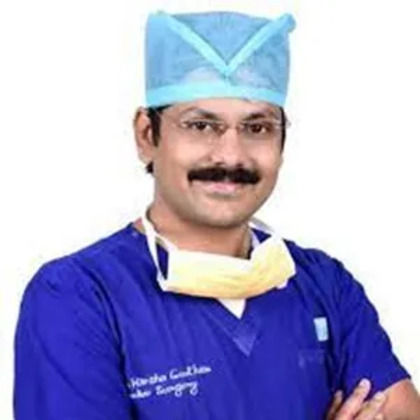
Dr. Harsha Goutham H V
Cardiologist
20 Years • MBBS, MS, MCH
Bengaluru
Apollo Clinic, Electronic City, Bengaluru
(25+ Patients)
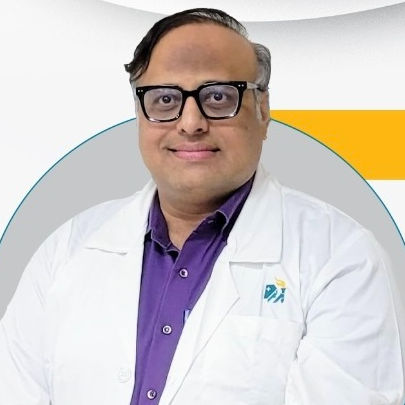
Dr. Lal Daga
Cardiologist
20 Years • MBBS, DNB [MED], DNB [CARDIO], FESC [INT], MNAMS
Ahmedabad
Apollo Hospitals Gandhinagar, Ahmedabad
Consult a Varicose Surgeon for Personalised Advice

Dr. Prakash Goura
Vascular and Endovascular Surgeon
8 Years • MBBS , DNB ( GENERAL SURGERY) , MRCS, MCh ( VASCULAR & ENDOVASCULAR SURGERY)
Hyderabad
Apollo Hospitals Jubilee Hills, Hyderabad
(50+ Patients)

Dr Yashpal Singh
Vascular and Endovascular Surgeon
18 Years • MBBS, MS (Gen. Surgery), DNB ( Peripheral Vascular Surgery)
Lucknow
Apollomedics Super Speciality Hospital, Lucknow

Dr. Abhijit Das
Surgical Oncologist
10 Years • MBBS MS, MCh (Surgical Oncology), Fellowship in Thoracic Oncology (SNUK, Korea), Fellowship in Advance Esophageal Surgery (NCC, Japan)
Chennai
Apollo Proton Cancer Center, Chennai

Dr. Harsha Goutham H V
Cardiologist
20 Years • MBBS, MS, MCH
Bengaluru
Apollo Clinic, Electronic City, Bengaluru
(25+ Patients)

Dr. Lal Daga
Cardiologist
20 Years • MBBS, DNB [MED], DNB [CARDIO], FESC [INT], MNAMS
Ahmedabad
Apollo Hospitals Gandhinagar, Ahmedabad
More articles from Varicose Veins
Frequently Asked Questions
1. Can varicose veins go away on their own?
No, once they develop, varicose veins will not disappear without treatment. However, symptoms can be managed, and their appearance can be reduced with lifestyle changes and medical procedures.
2. Are there any effective home remedies for swollen veins?
Yes, alongside wearing compression stockings, regular walking, elevating your legs, and maintaining a healthy weight are excellent home remedies for swollen veins that can significantly reduce discomfort and swelling.
3. Is walking good for varicose veins?
Absolutely. Walking is one of the best exercises for varicose veins. It engages your calf muscles, which act as a pump to help push blood back toward your heart, improving circulation and reducing pressure in the veins.
4. Can you get varicose veins in your arms?
It is very rare. Varicose veins almost exclusively occur in the legs due to the pressure of gravity on the circulatory system when we are upright.
5. What is the recovery time for varicose vein treatment?
Recovery for minimally invasive procedures like sclerotherapy or laser ablation is very quick. Most people return to normal activities the same day, with only minor soreness or bruising. More invasive surgery may require a week or two of recovery.
